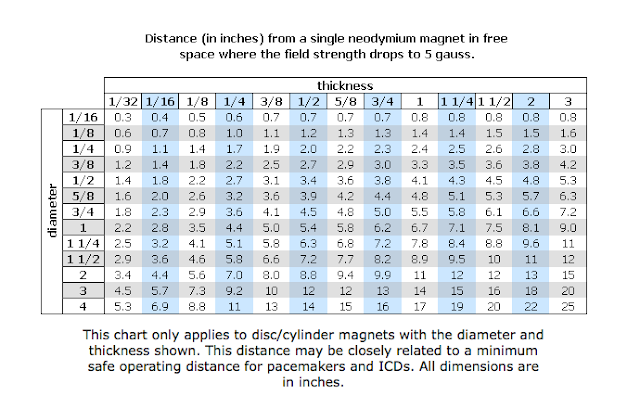We use rare earth magnets quite often here at Spicer Art Conservation. One
of the many questions that we hear from fellow conservators, curators, and others who are using magnets in treatments or exhibit mounting is:
Rare earth magnets surround our everyday lives, but we may not realize that they are hidden in our cell phones, other devices, ear buds, etc. Medical professionals have investigated the dangers of a patients proximity to rare earth magnets mainly because of their concern with the effect of magnets on pace makers, defibrillators, and brain shunts. Why the concern? Because the settings on each of these medical devices is controlled by magnets.
"Are magnets dangerous to my health and are there negative effects from my close proximity to strong magnets"?
Rare earth magnets surround our everyday lives, but we may not realize that they are hidden in our cell phones, other devices, ear buds, etc. Medical professionals have investigated the dangers of a patients proximity to rare earth magnets mainly because of their concern with the effect of magnets on pace makers, defibrillators, and brain shunts. Why the concern? Because the settings on each of these medical devices is controlled by magnets.
All magnets, when purchased, come with warnings about their effect on pace makers in particular. A pace maker, or defibrillator, deliver signals to the heart, causing it to beat without regard to the patients’ underlying heart rhythm. When exposed to a magnet the device works improperly or is deactivated. Pace makers or defibrillators are negatively affected starting at 10 gauss (however, conservative estimates place this number at 5 gauss). This can result in a pacemaker missing a beat or cause an ICD defibrillator to temporarily stop looking for abnormal heart rhythms. As a comparison: headphones have small magnets with field strengths as high as 200 gauss or more (that's 20 times more than the dangerous limit of 10 gauss or 40 times the limit of the more conservative 5 gauss limit).
 |
| Internal parts to Earbuds. |
Therefore, in the museum world, the real danger of magnets might be to the conservator or preparer, and not as much to the visitor to an exhibition. A visitor most likely will not be close enough to any artifact or object within a case to be effected. As a courtesy, a small sign could be placed on stand-alone cases. Only an artifact in a small-bonneted case where something might need close inspection might be an issue if a particularly strong magnet was used.
The chart below comes from K & J Magnetics where they have provided magnet sizing guidelines to reach a 5 gauss or lower reading. This chart and their article on "Pacemaker Safety" can be found on their website.
And what about us? As practitioners (especially those who use an implanted device like a pace maker), we do need to remain at "arms length" from magnets, and no problems should arise. However, our exposure to magnets when mounting or treating an artifact is limited to a brief time period. The real issue for all of us seems to be our own personal electronics and how much exposure we have to these items that have "invaded" our lives.
The bottom line, don't be afraid to use rare earth magnets to mount or treat an artifact. And if you have an implanted medical device, don't put the magnets near your device.
For additional information read these:
The bottom line, don't be afraid to use rare earth magnets to mount or treat an artifact. And if you have an implanted medical device, don't put the magnets near your device.
For additional information read these:
- Morphy, Erika 2008 "Study: Headphone Magnets Mess with Pacemakers", TechNewsWorld
- As always, K & J has exceptional information about magnets (for example the chart above comes from K & J's page on pacemaker safety). But there is so much more! Look around their website for all the other magnet information they offer.
_____________________________
Gwen Spicer is a textile conservator in private practice. Spicer Art Conservation specializes in textile conservation, object conservation, and the conservation of works on paper. Gwen's innovative treatment and mounting of flags and textiles is unrivaled. To contact her, please visit her website.
Learn more about magnets and their many uses in the new publications Magnetic Mounting Systems for Museums and Cultural Institutions. Available for purchase at www.spicerart.com/magnetbook.
Learn more about magnets and their many uses in the new publications Magnetic Mounting Systems for Museums and Cultural Institutions. Available for purchase at www.spicerart.com/magnetbook.
